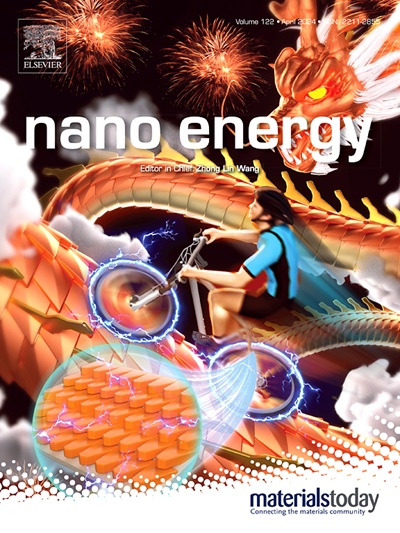Anomalous stable 4.6 V LiCoO2 in all-solid-state lithium batteries
IF 16.8
1区 材料科学
Q1 CHEMISTRY, PHYSICAL
引用次数: 0
Abstract
The commercialization of high-voltage LiCoO2 (LCO) which possesses ultrahigh volumetric energy density is largely limited by a rapid capacity degradation. Although much progress has been made in optimizing high-voltage LCO, the long-cycled irreversible structure transformation and capacity loss is not practically solved, meaning that there are still scientific questions to be answered. Here, we report an anomalous stable 4.6 V (vs. Li/Li+) LCO with a record long-cycle capacity retention (94 % after 200 cycles at 2 C) in an all-solid-state lithium battery (ASSLB) system, which rarely achieved in the liquid one. The stable 4.6 V LCO originates from the unique ionic diffusion environment in the ASSLB, unlike in the liquid one, where there is a similar Li-ion diffusion velocity between the LCO’s bulk and surface structure. Such a homogenous bulk-to-surface Li concentration distribution upon cycling can well retard the irreversible phase transitions, as directly revealed by transmission electron microscopy. More broadly, this work unlocks the role of cycled Li distribution, a previously un-answered scientific question, in optimizing high-voltage Li-storage lattice and also sheds light on the design of high-voltage ASSLBs.

全固态锂电池中异常稳定的 4.6 V LiCoO2
高压钴酸锂(LCO)具有超高的体积能量密度,但其商业化在很大程度上受到容量快速衰减的限制。尽管在优化高压钴酸锂方面已经取得了很大进展,但长周期不可逆结构转变和容量衰减问题并没有得到实际解决,这意味着仍有一些科学问题有待解答。在此,我们报告了一种异常稳定的 4.6 V(相对于 Li/Li+)LCO,其在全固态锂电池(ASSLB)系统中的长周期容量保持率(2 C 下循环 200 次后达到 94%)创下了纪录,而这在液态锂电池中是很少能实现的。稳定的 4.6 V LCO 源自全固态锂电池中独特的离子扩散环境,这与液态锂电池不同,在液态锂电池中,LCO 的块体和表面结构之间具有相似的锂离子扩散速度。正如透射电子显微镜直接显示的那样,循环过程中这种均匀的体表锂离子浓度分布可以很好地延缓不可逆相变。从更广泛的意义上讲,这项研究揭示了循环锂分布这一之前尚未解答的科学问题在优化高压锂存储晶格中的作用,同时也为高压 ASSLB 的设计提供了启示。
本文章由计算机程序翻译,如有差异,请以英文原文为准。
求助全文
约1分钟内获得全文
求助全文
来源期刊

Nano Energy
CHEMISTRY, PHYSICAL-NANOSCIENCE & NANOTECHNOLOGY
CiteScore
30.30
自引率
7.40%
发文量
1207
审稿时长
23 days
期刊介绍:
Nano Energy is a multidisciplinary, rapid-publication forum of original peer-reviewed contributions on the science and engineering of nanomaterials and nanodevices used in all forms of energy harvesting, conversion, storage, utilization and policy. Through its mixture of articles, reviews, communications, research news, and information on key developments, Nano Energy provides a comprehensive coverage of this exciting and dynamic field which joins nanoscience and nanotechnology with energy science. The journal is relevant to all those who are interested in nanomaterials solutions to the energy problem.
Nano Energy publishes original experimental and theoretical research on all aspects of energy-related research which utilizes nanomaterials and nanotechnology. Manuscripts of four types are considered: review articles which inform readers of the latest research and advances in energy science; rapid communications which feature exciting research breakthroughs in the field; full-length articles which report comprehensive research developments; and news and opinions which comment on topical issues or express views on the developments in related fields.
 求助内容:
求助内容: 应助结果提醒方式:
应助结果提醒方式:


